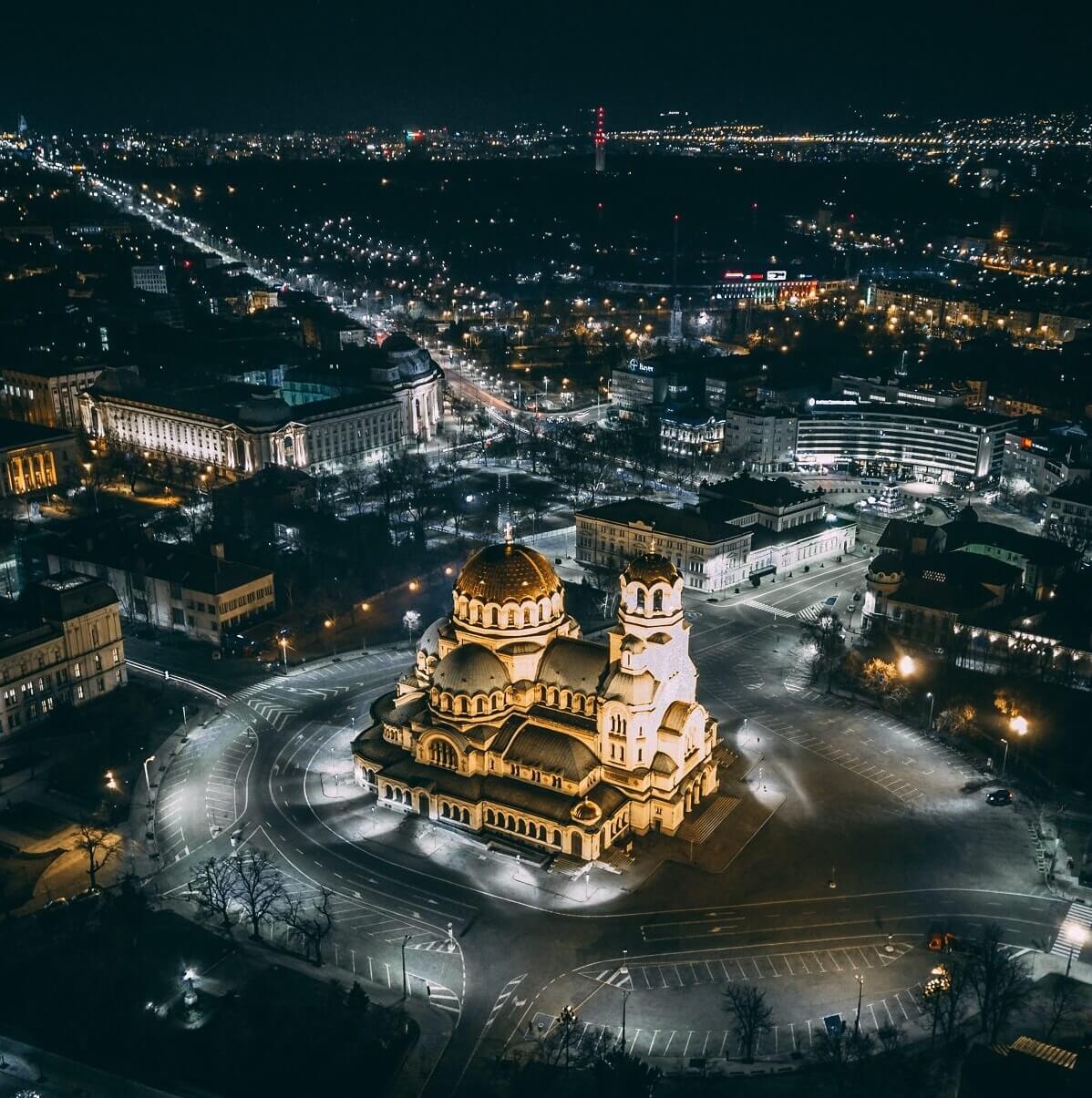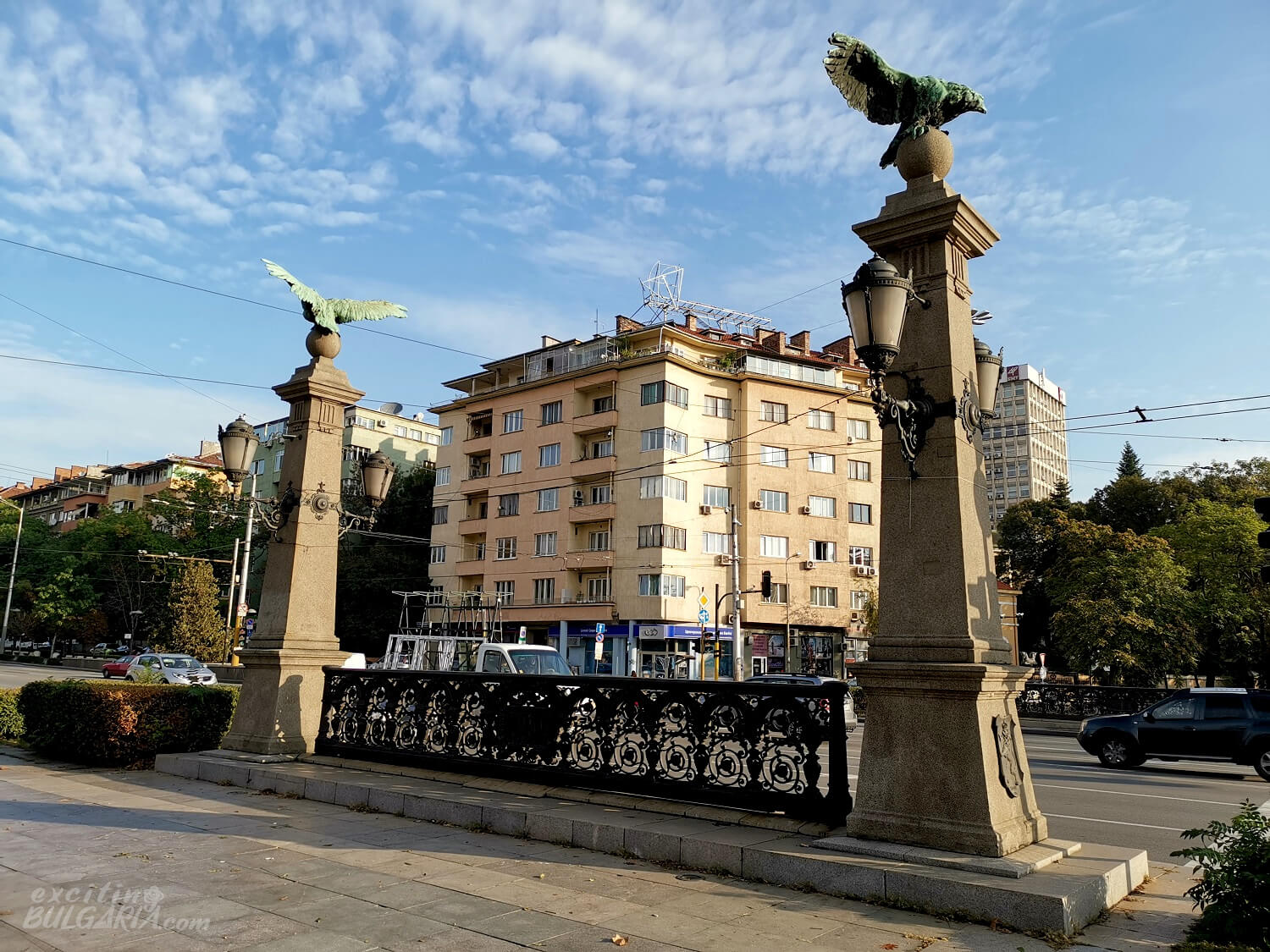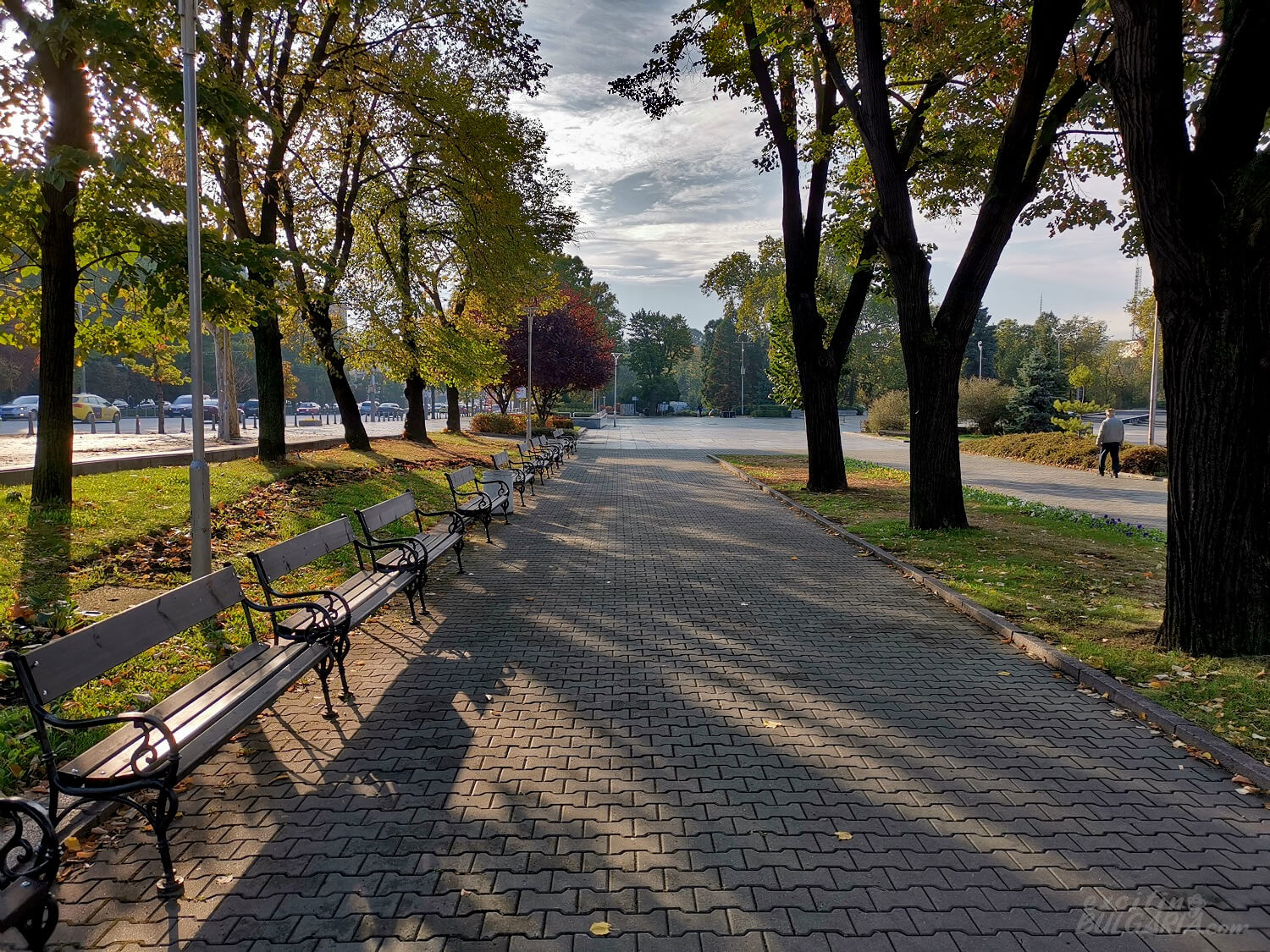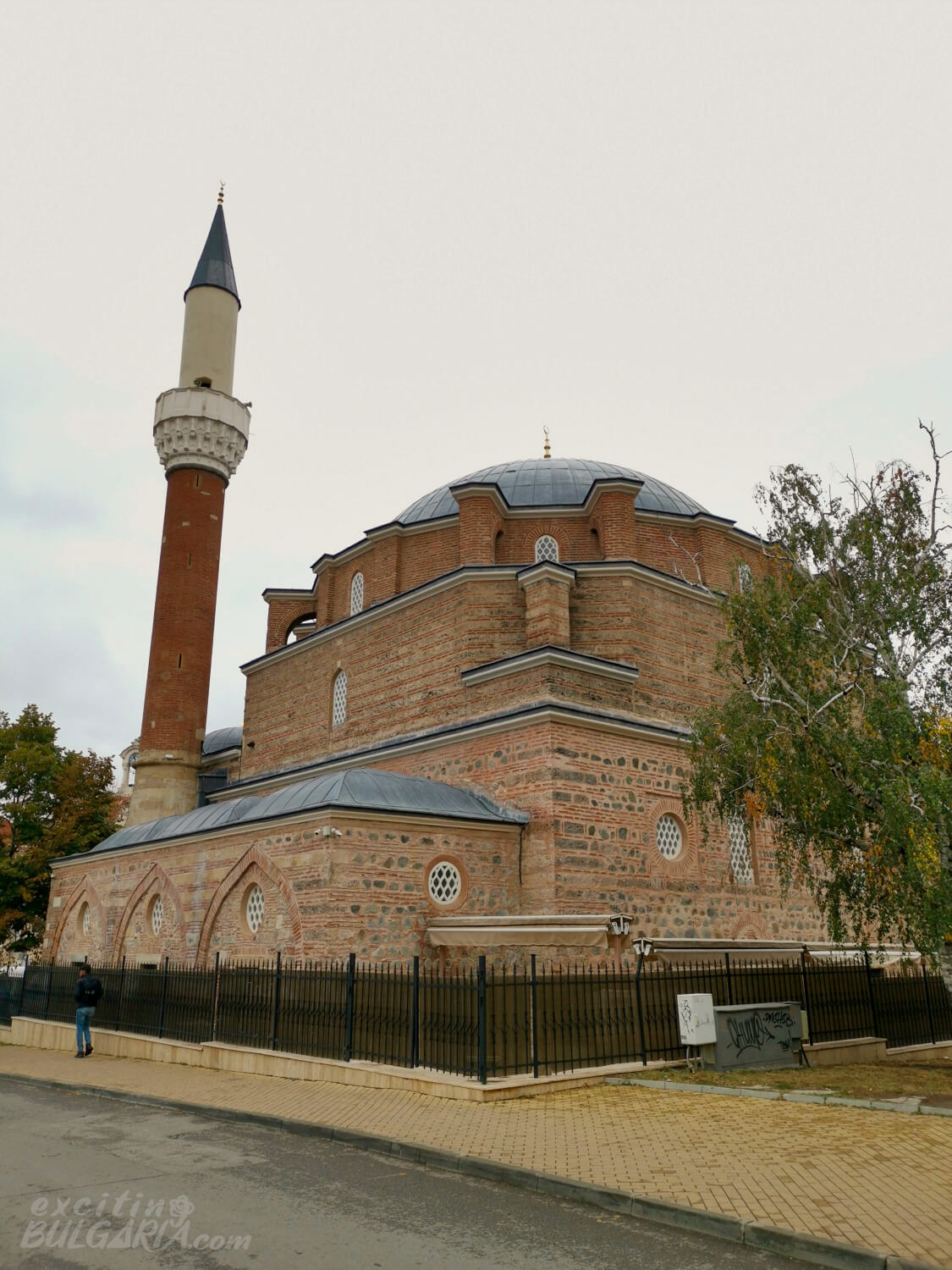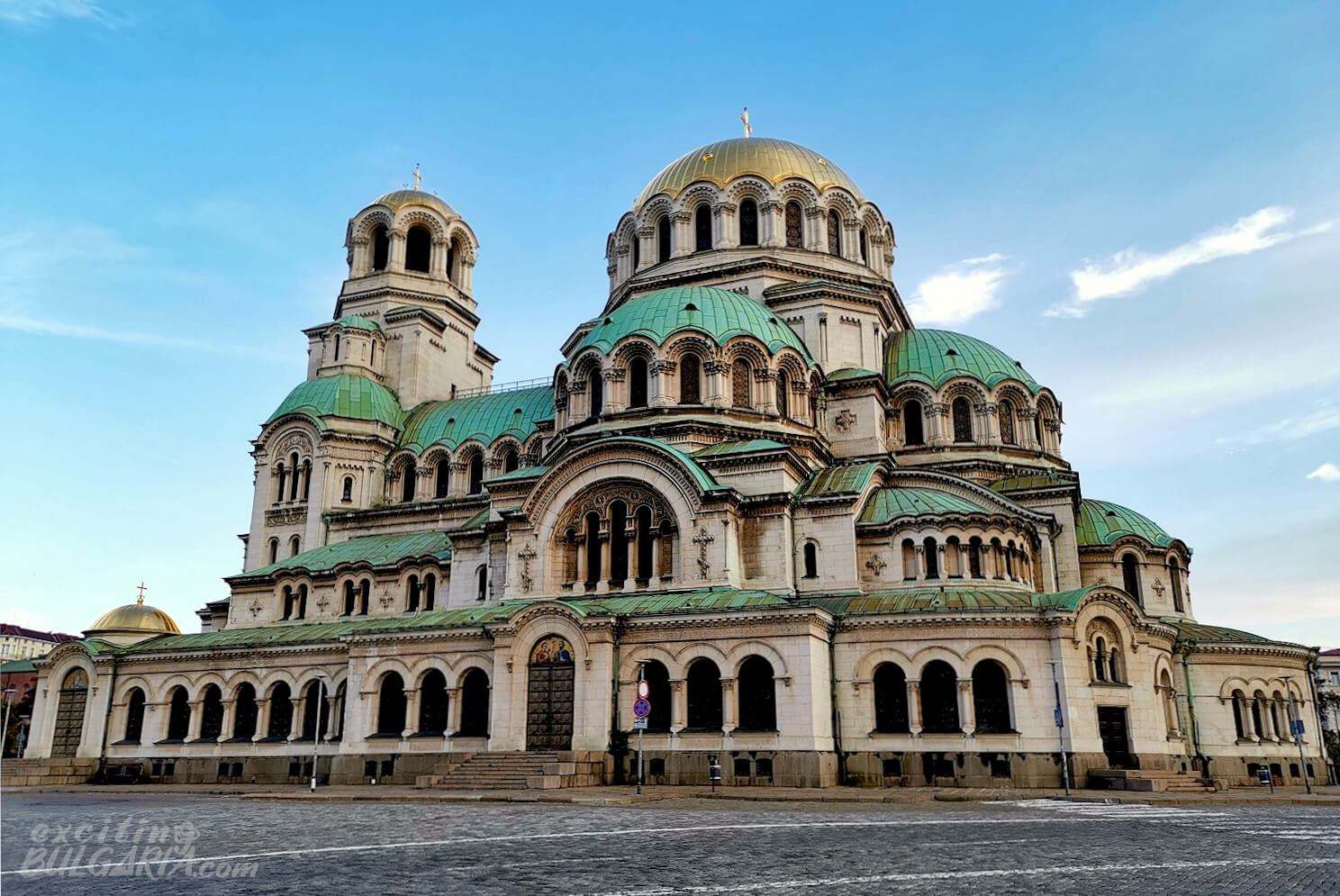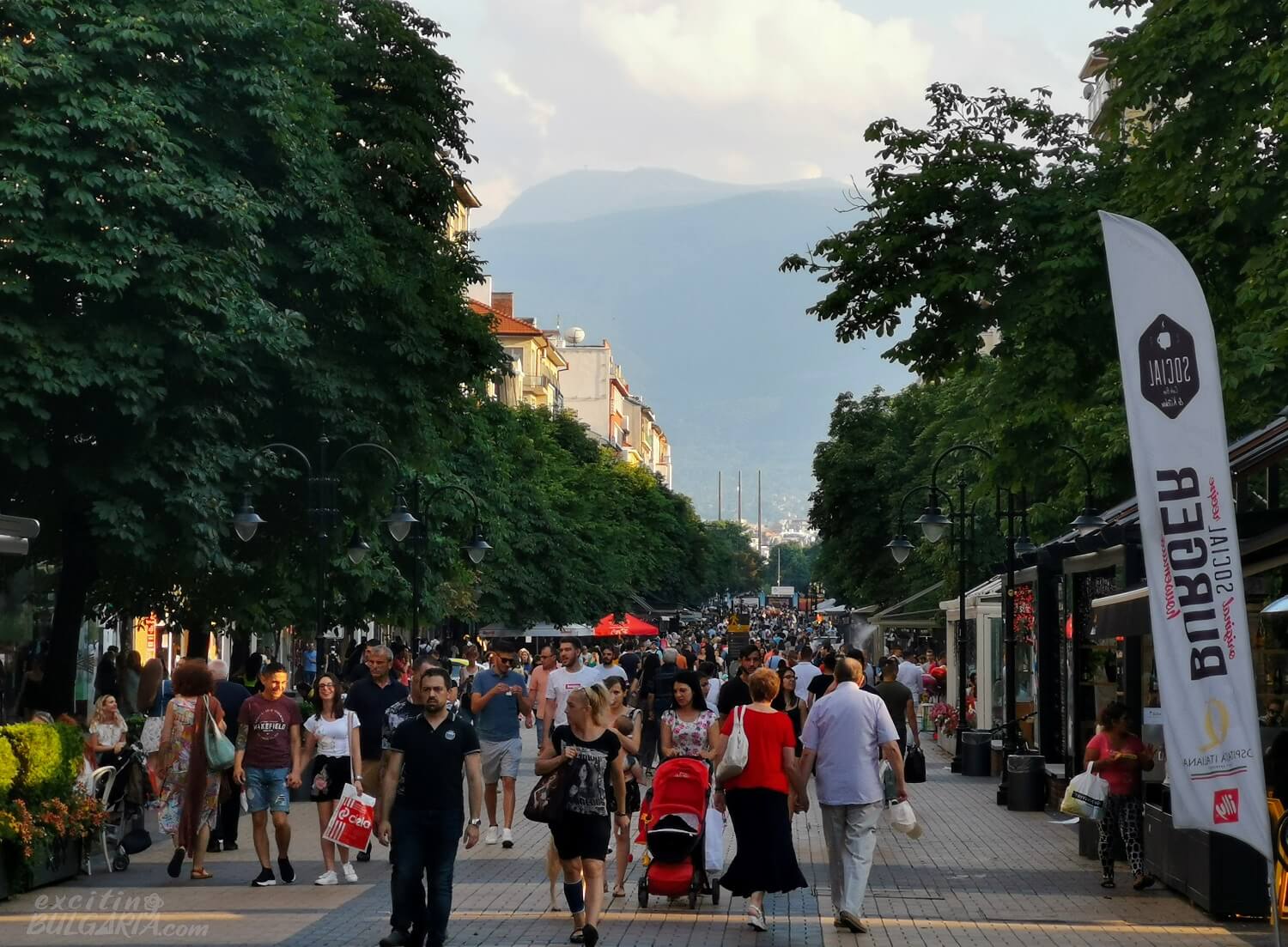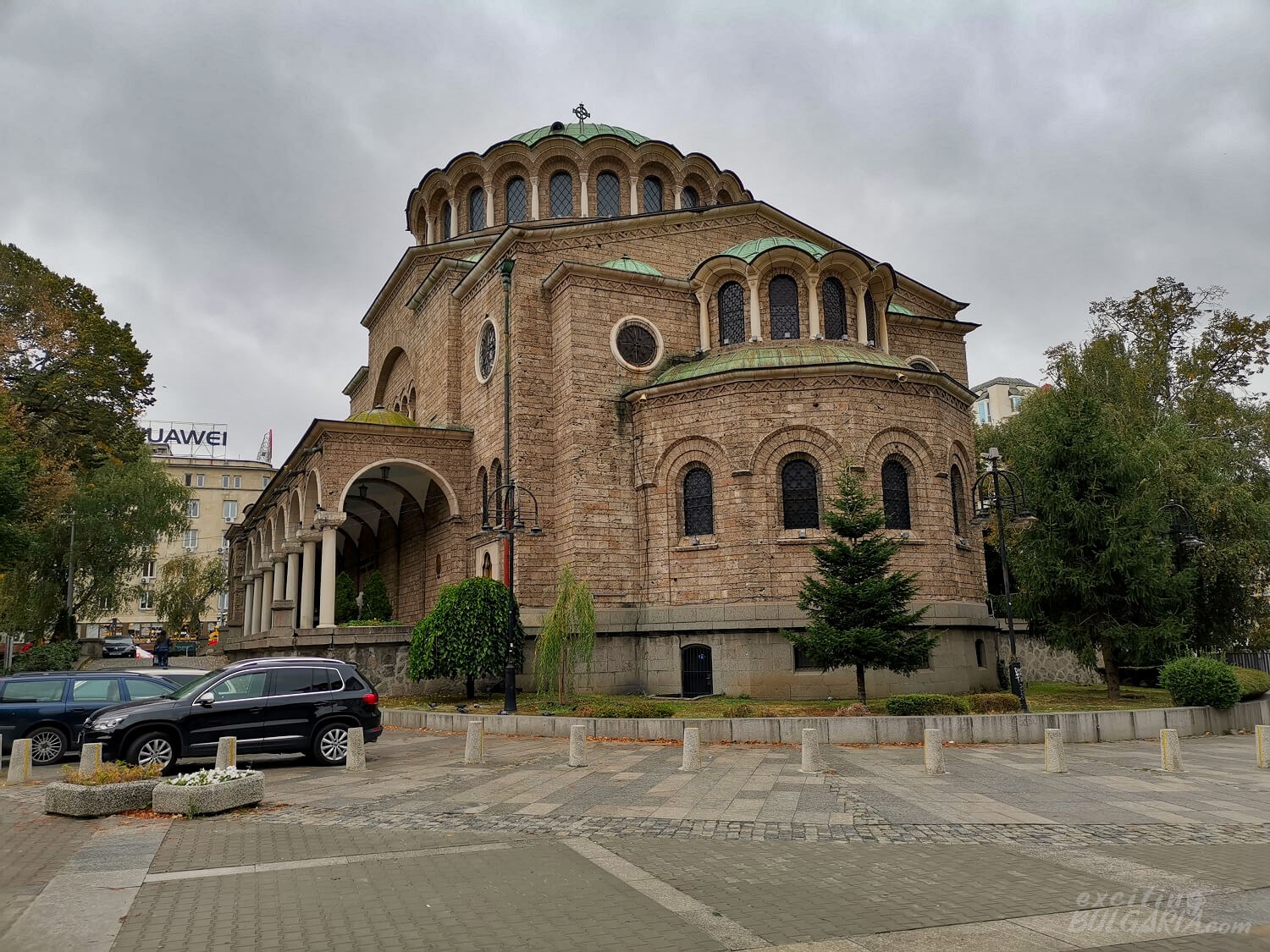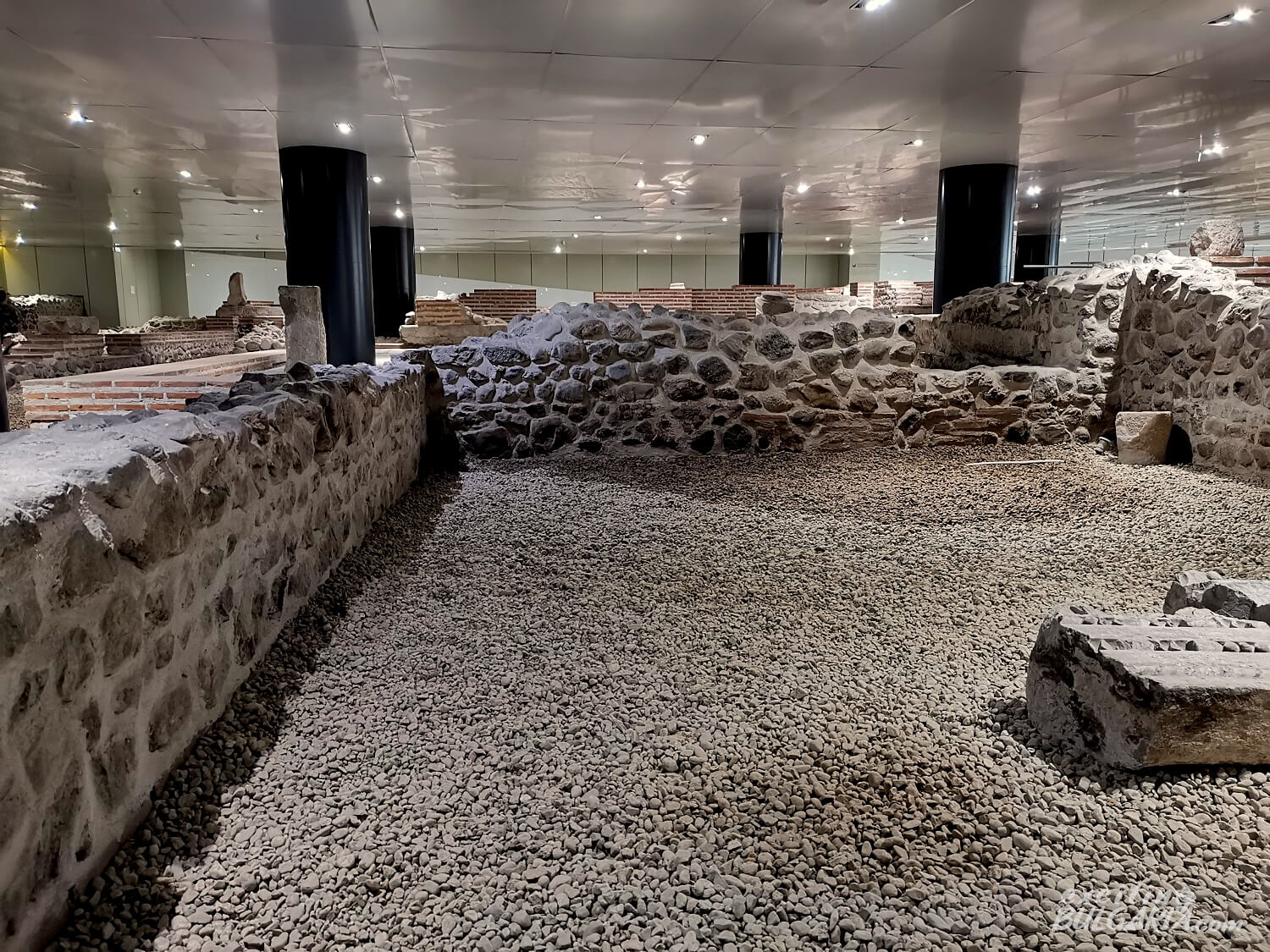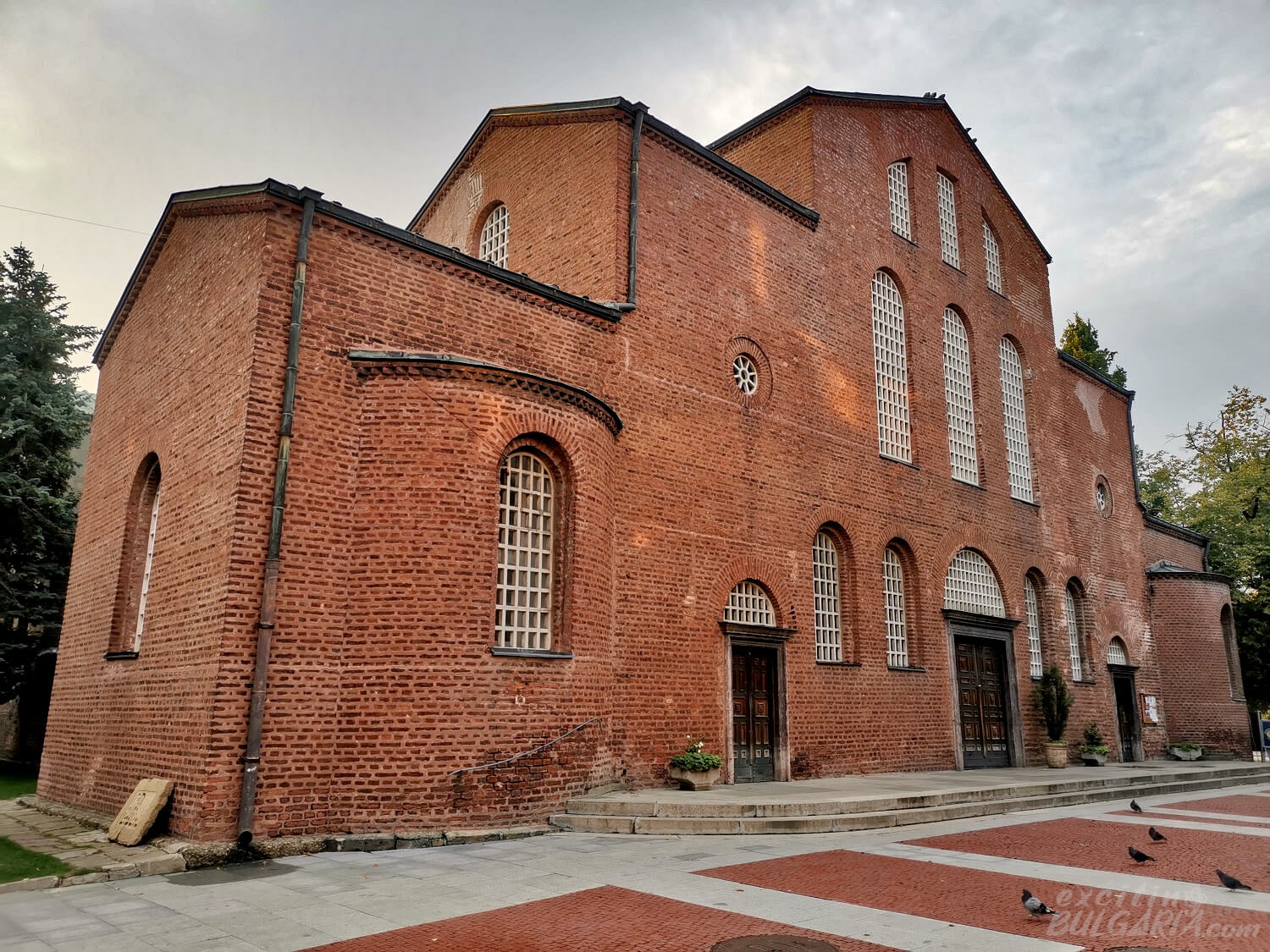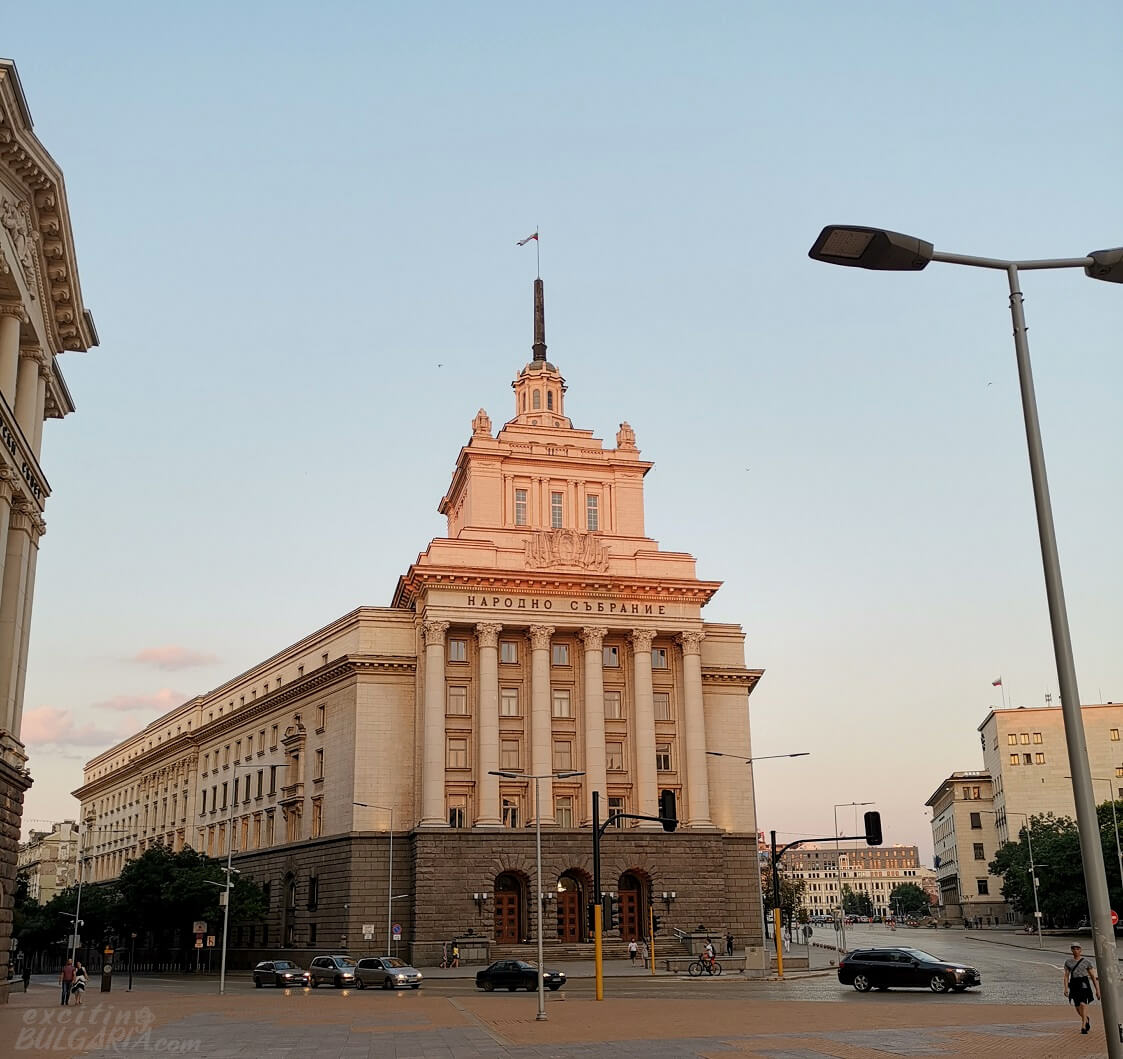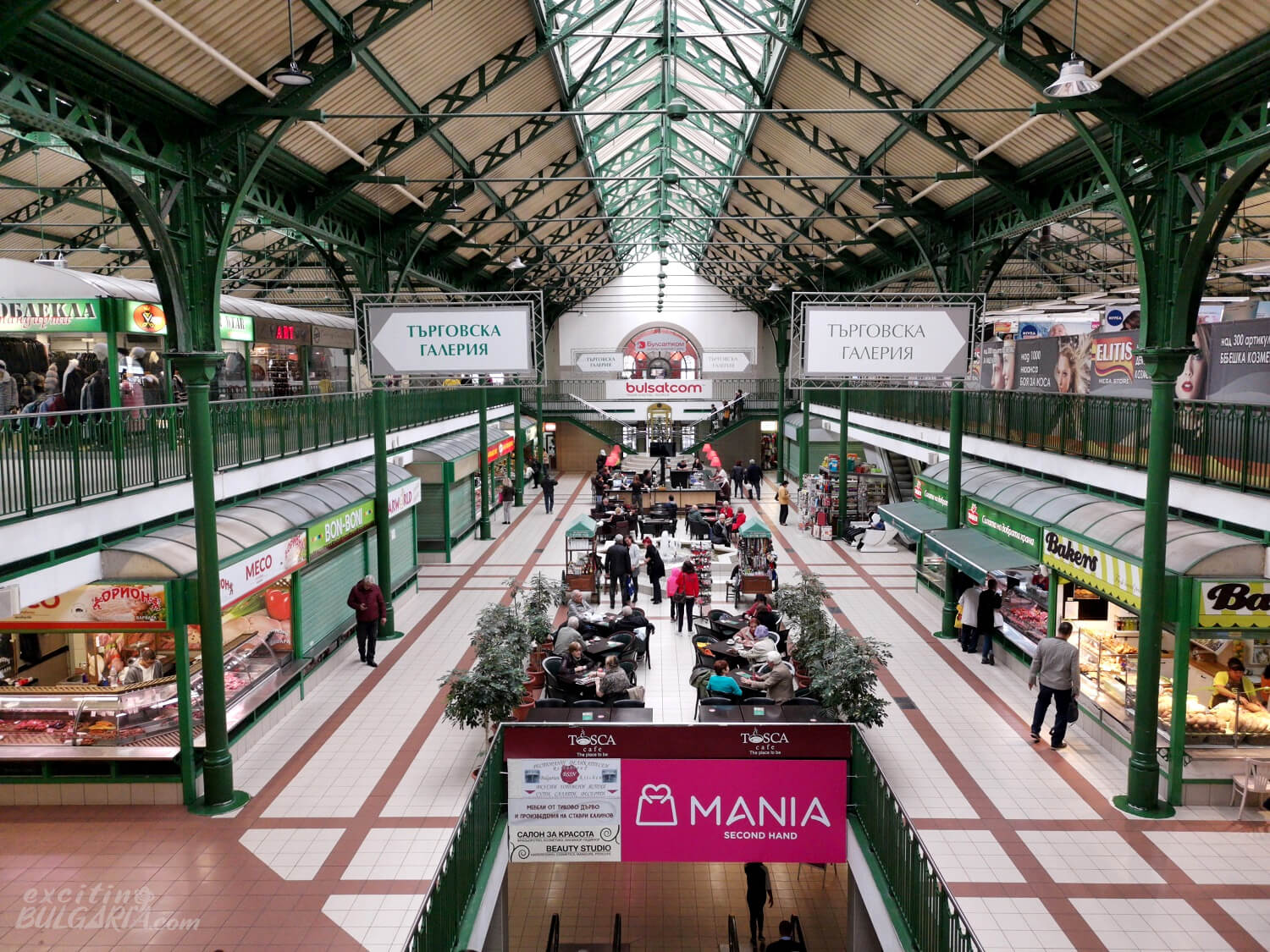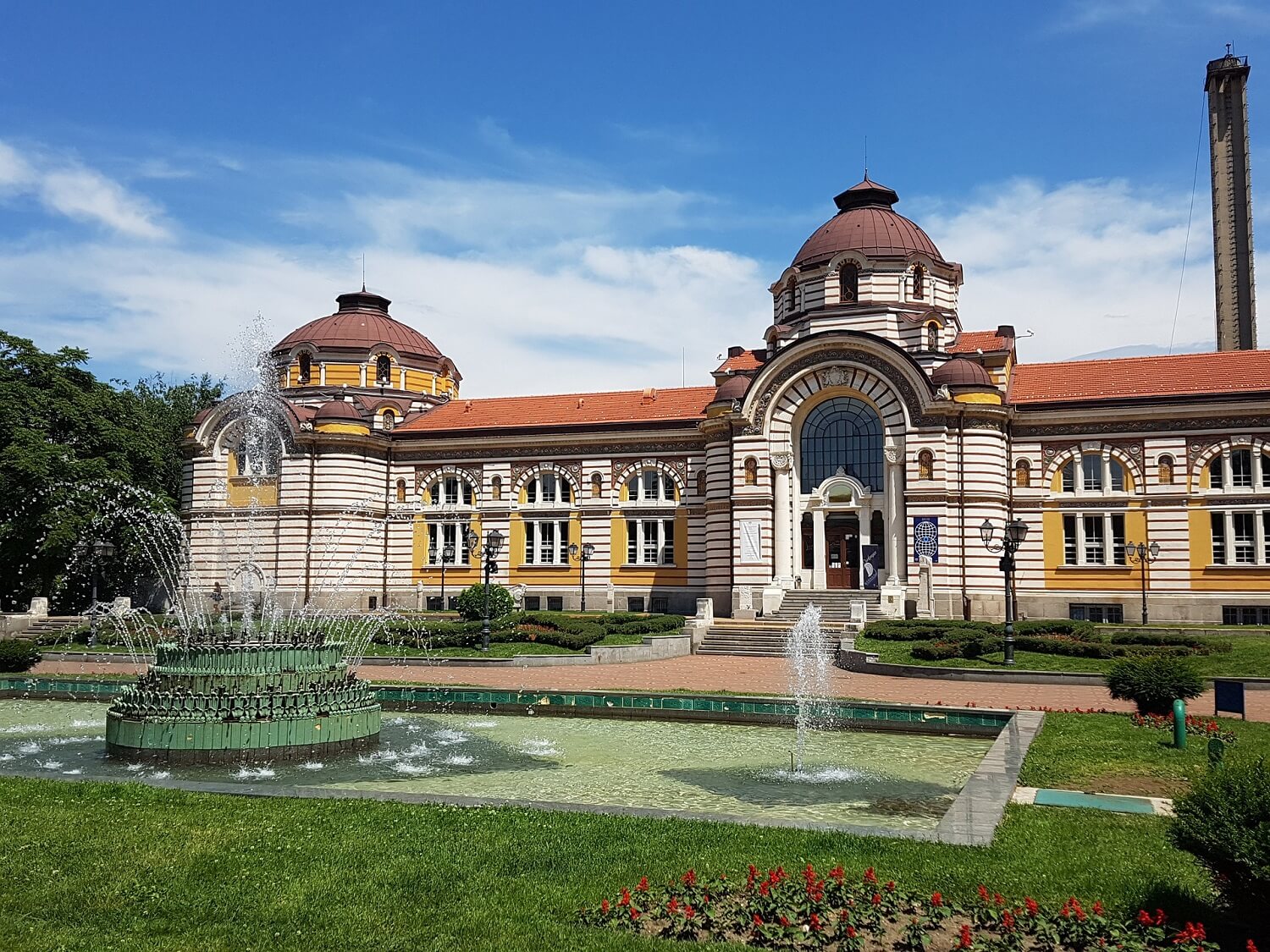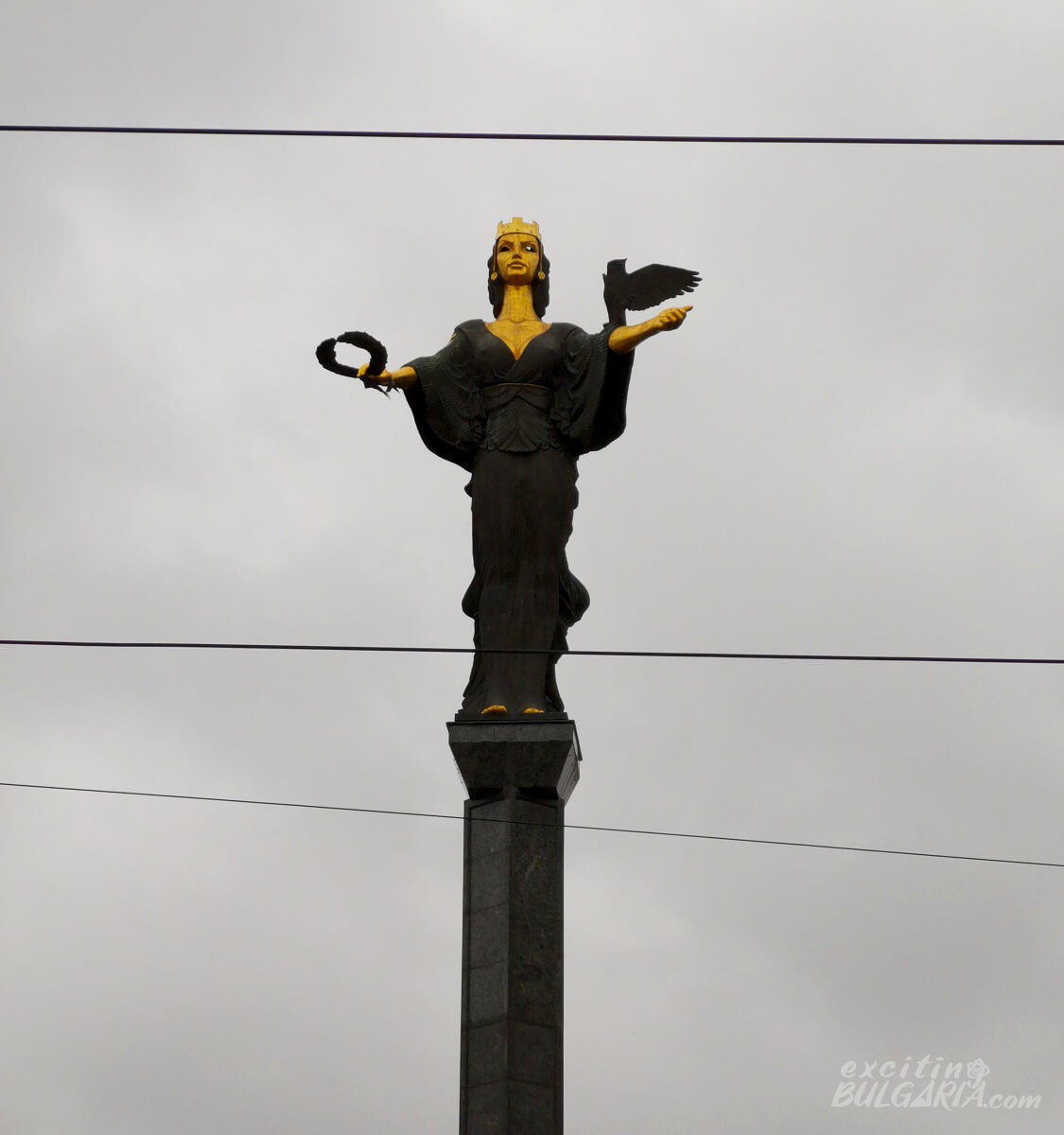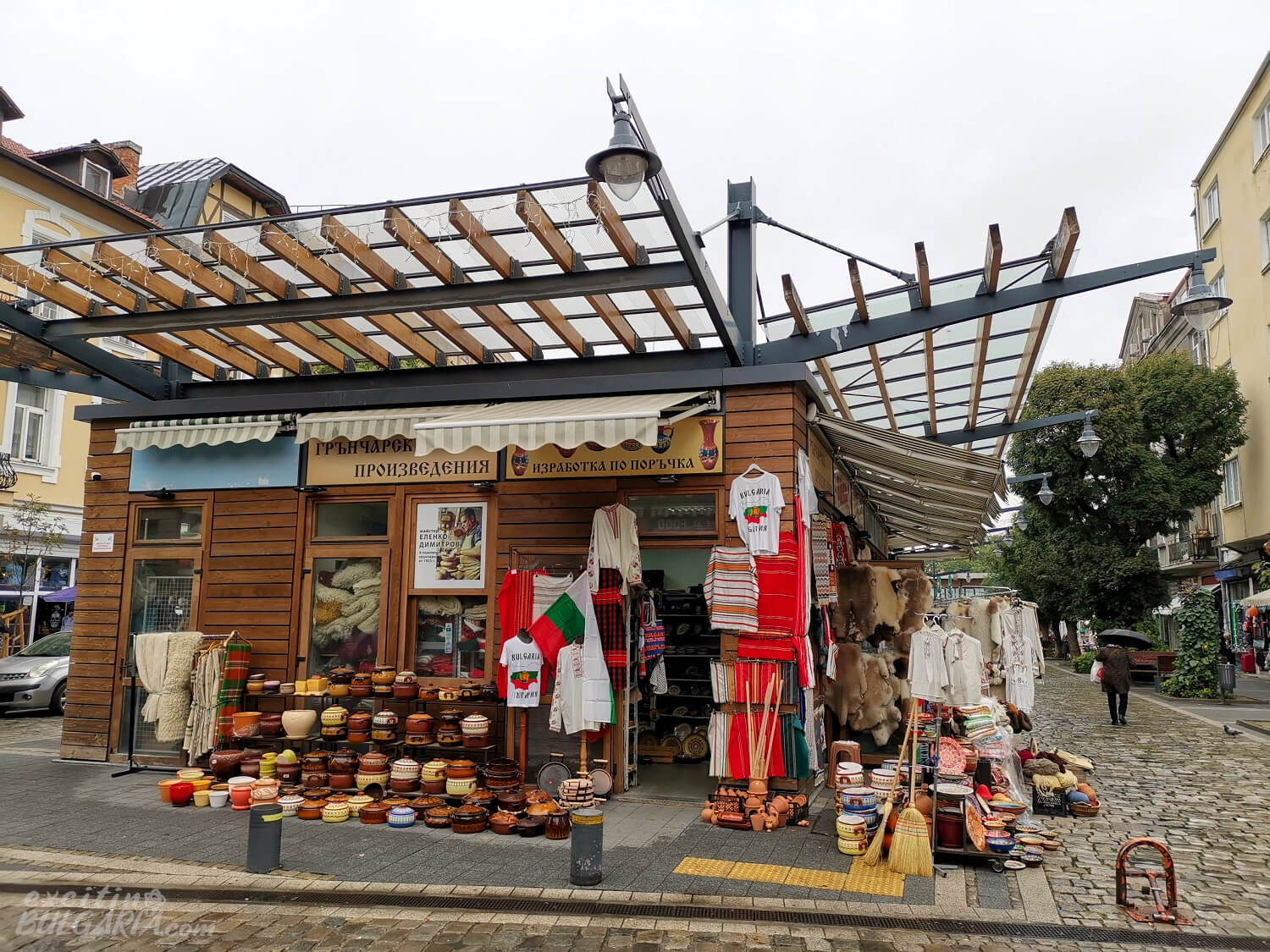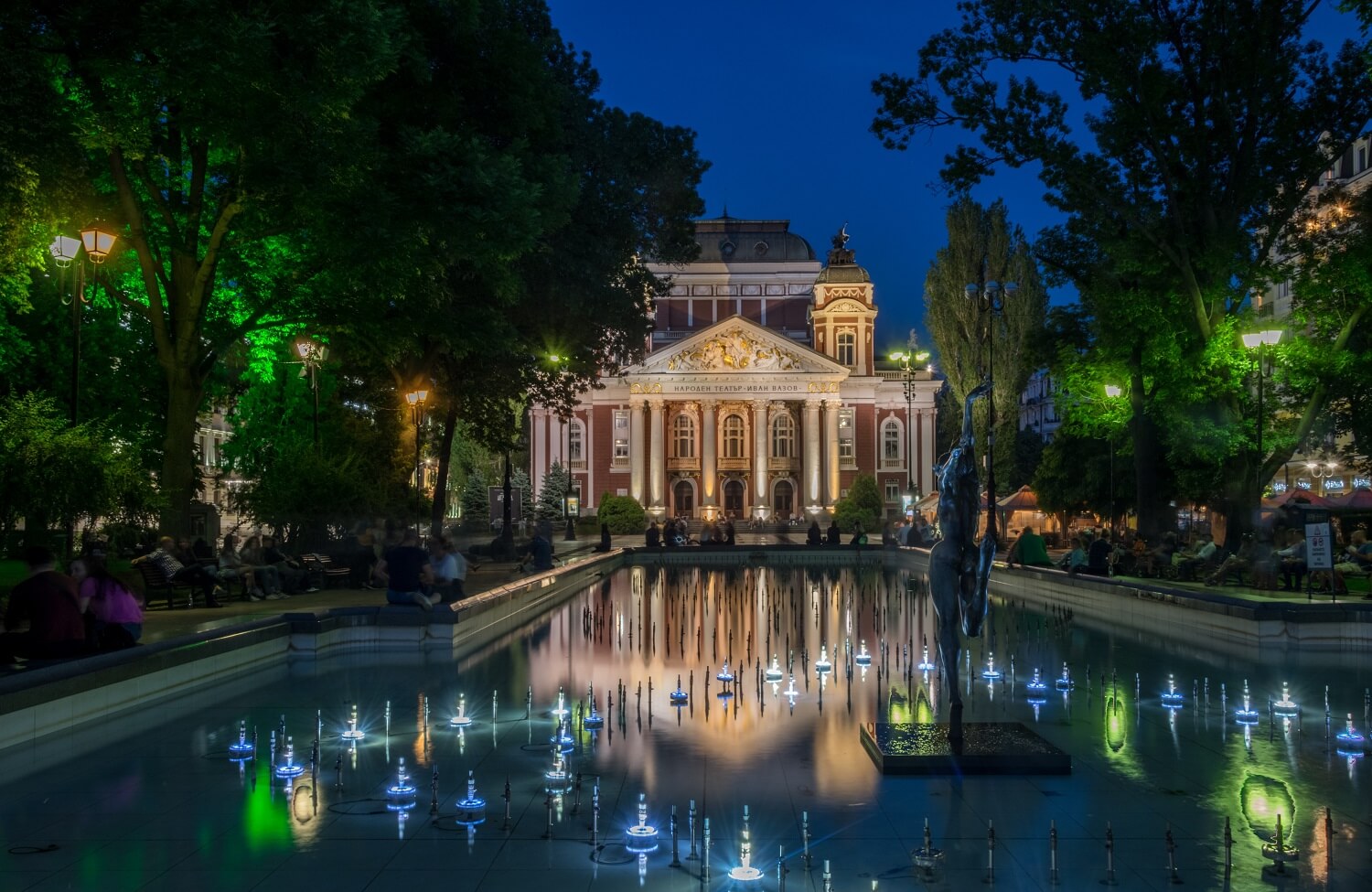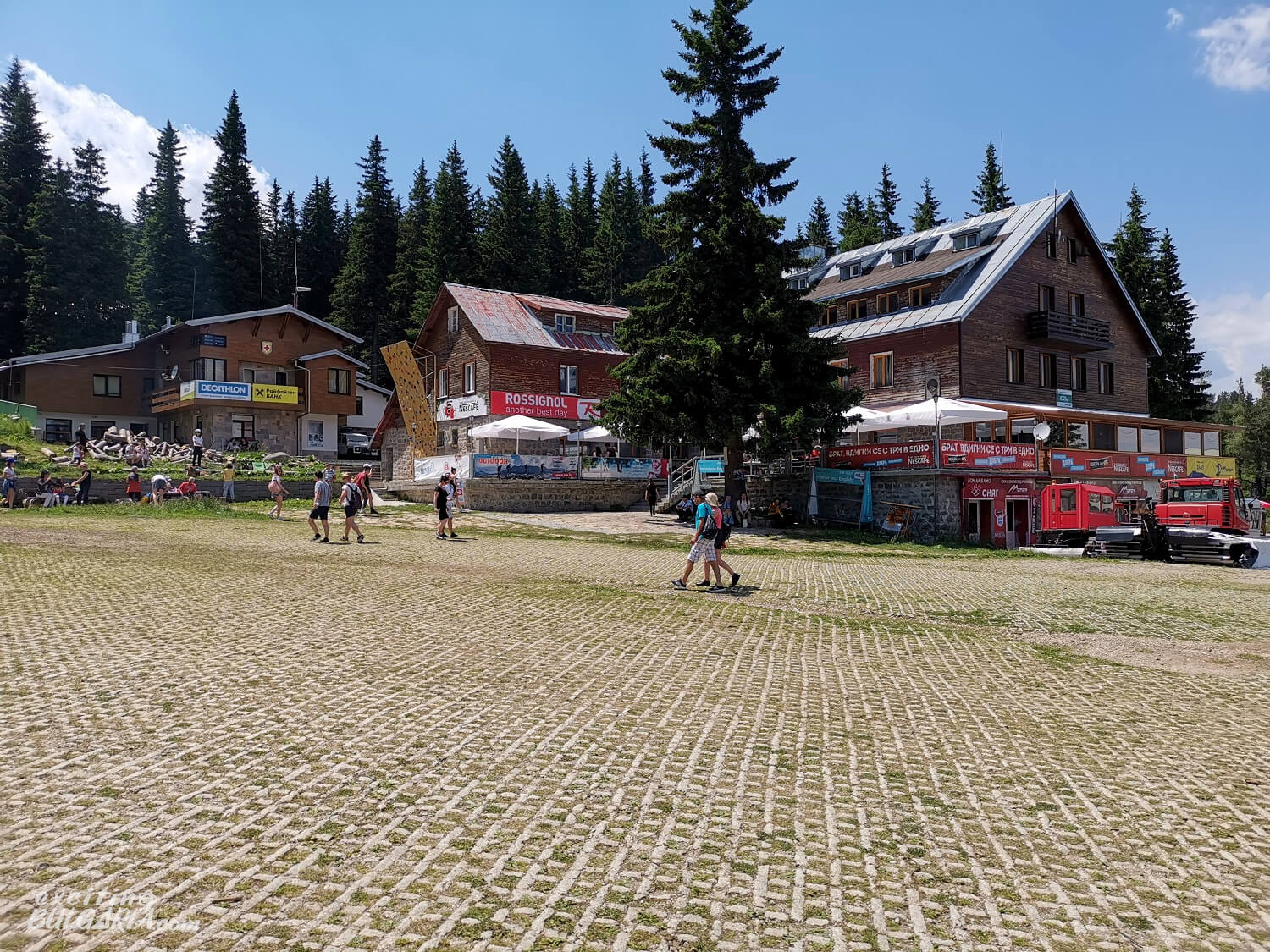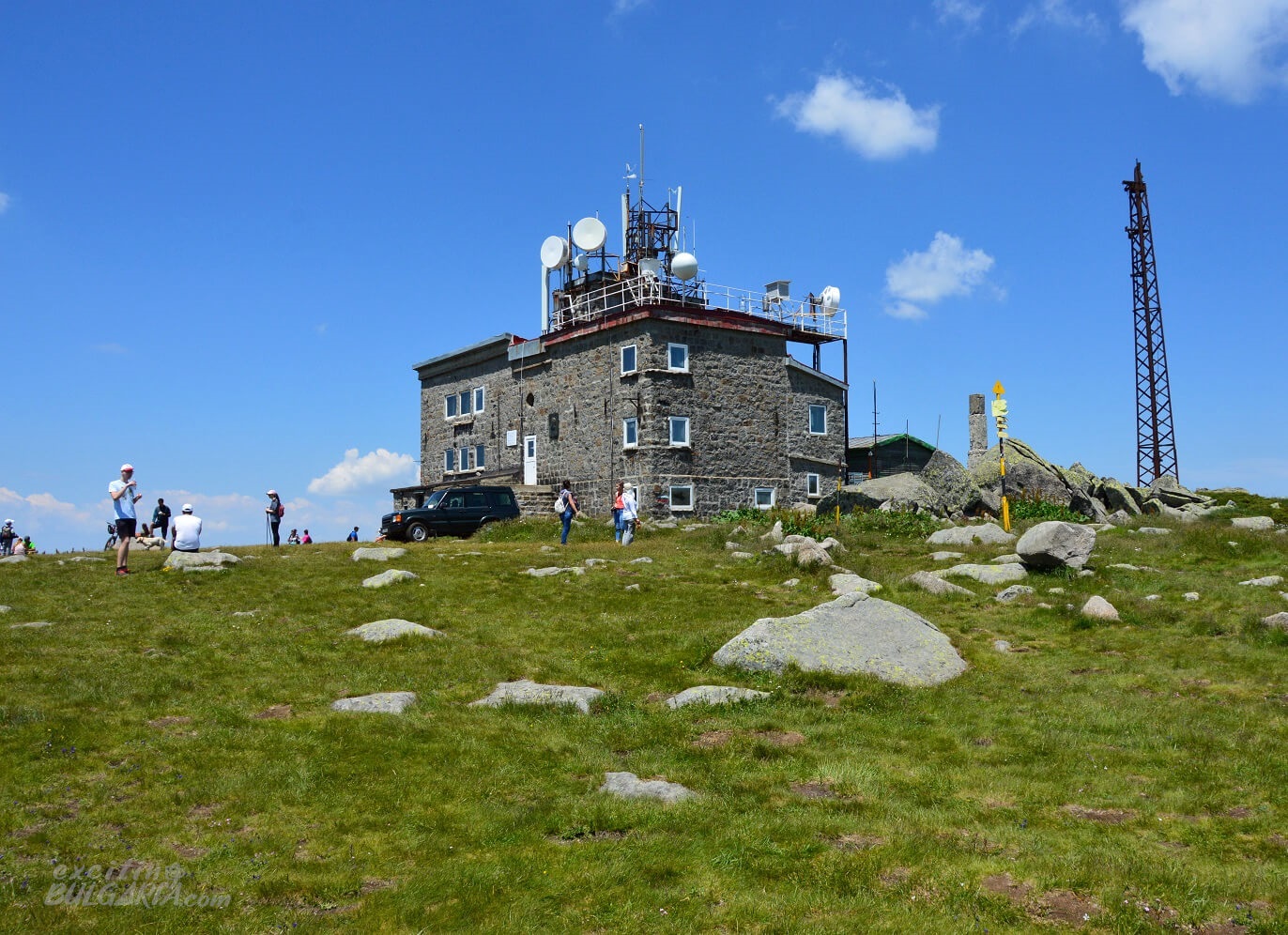Last updated on 7 July 2025
Sofia is the capital and largest city of Bulgaria with a population of 1.33 million. It is situated at the foothills of the 2290-m-high Vitosha mountain. Thanks to its location, Sofia is not just a city with rich culture and history, but a great hiking base and ski resort as well. Sofia is among Bulgaria’s top tourist destinations after sea and mountain resorts.
Location
Sofia (BG: София) is located in the western part of Bulgaria. It lies in the Sofia valley which is surrounded by Vitosha from the south and the Balkan Mountains from the north. The valley itself has an average altitude of 550 m, making Sofia the second highest capital in the European Union after Madrid.
Without doubt, the unique feature of the city is Vitosha. As the mountain rises more than 1700 meters above the city’s level, it provides an amazing view in all seasons. Besides numerous places for hiking and skiing, Vitosha also hosts Bulgaria’s longest cave (18.2 km), called Duhlata.
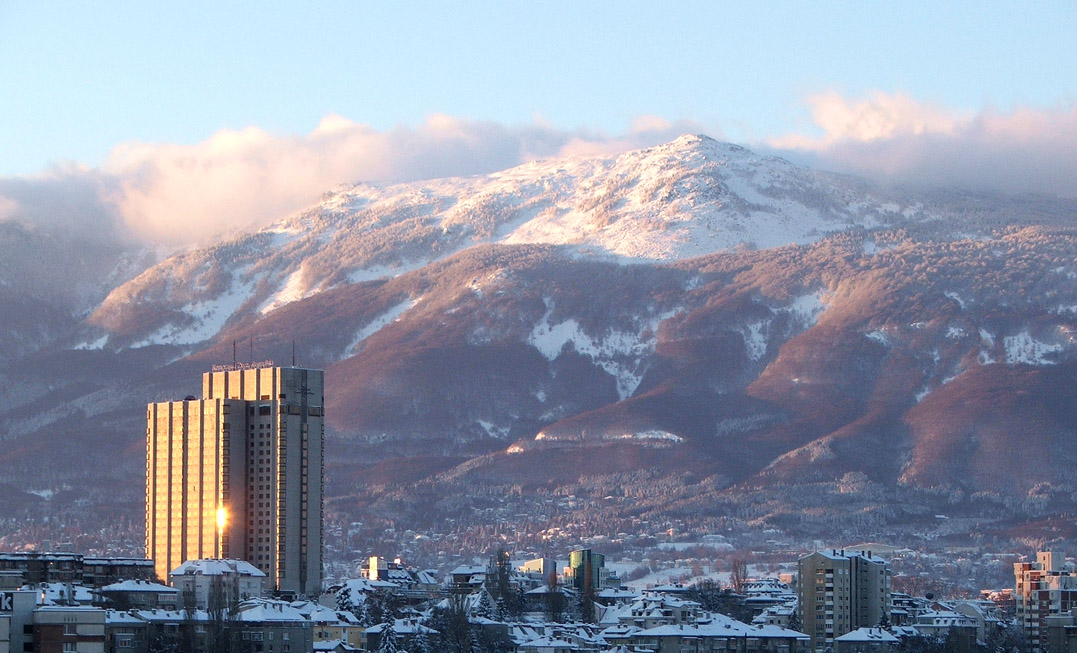
TIP: Vitosha can serve as a compass as well. It is visible from every part of Sofia, so by looking at it, you can always tell where south/southwest is.
Sofia doesn’t have any large river. The two famous bridges of the city are built over small, shallow ones: Eagle’s Bridge over the Perlovska river and Lion’s Bridge over the Vladayska river. The Iskar river flows next to the eastern suburbs (also under Sofia Airport’s runway), about 10 km away from the city center.
When To Visit
Due to its altitude and the surrounding mountains, Sofia is generally a bit colder than most of the country. This can be pleasant in the summer as the average highs remain between 25 and 28 C. However, heatwaves can occur with temperatures even above 35 C. In the winter, the daytime temperature is usually around 0 C and snow is quite common. Spring and autumn conditions are very unpredictable and variable. Nice, sunny days are perfect for city walks in April or October. Sofia is not particularly windy, so exploring its streets can be convenient even in colder weather.
History
Thanks to its thermal springs, the area has been populated since tens of thousands of years. The city has a history dating back to the neolithic age, almost 7000 years ago.
Today’s Sofia is built on the remains of the ancient city of Serdica. It was first inhabited by Thracian tribes, then became a significant city in the Roman Empire between the 1st and 5th centuries AD.
Serdica was the capital of the Roman province Dacia Aureliana, and the most important settlement on the Roman road Via Militaris, connecting Singidunum and Byzantium (present day Belgrade and Istanbul). It was the birthplace of the Roman emperor Galerius, and possibly Aurelian as well, but sources do not agree on that.

Constantine the Great loved the city so much that he even considered choosing Serdica as the new capital of the forming Byzantine Empire before building Constantinople.
Sofia became the capital of the First Bulgarian Empire for a short time around year 972. The city’s name has changed from Serdica to Sredets by then.
Bulgaria was invaded by the Ottoman Empire in the 14th century, and their rule lasted for nearly 500 years. During this period, Sofia served as the capital of the Ottoman province of Rumelia. The most important building from these times is Banya Bashi Mosque.
Sofia became the capital of the re-established sovereign Bulgarian state in 1879, one year after the liberation of Bulgaria. The city had only about 11500 residents by that time, but saw a huge population increase in the next few decades.
The name of the city comes from Saint Sofia Church. Despite the fact that the name Sofia already appeared in the 14th century, it only became official after a long dispute to slowly replace the name Sredets.
As A Tourist
Sofia is a destination easy to explore by foot. Most of the important sites are in the city center very close to each other, in a comfortable walking distance. Some of them are literally right next to each other.
However, some sights like Boyana Church or Drag are far from the city center. We highly recommend buying a daily ticket for public transport, which costs only 4 BGN. That’s amazingly cheap compared to the 1.60 BGN price of a single ticket. It allows unlimited travel on all lines including metro, and makes the mentioned spots easily reachable.
What To See In Sofia
Alexander Nevsky Cathedral
BG: Свети Александър Невски, Sveti Aleksandar Nevski Square, GPS: 42.695828, 23.332747
Sofia’s best known symbol is not as old as you might think. The Bulgarian Orthodox cathedral was completed in 1912. It is built in honor to the Russian soldiers who died during the Russo-Turkish War (1877-1878), which led to Bulgaria’s liberation from the Ottoman Empire. The Neo-Byzantine style building has a 45 m high gold-plated dome and a capacity for 5000 worshippers. It is located in the middle of a large, open square, so it’s easy to walk around to see it from every angle. Alexander Nevsky Cathedral is open from 7:00 to 19:00 every day and is free to enter. To find out more, visit our guide to the cathedral.
Vitosha Boulevard
BG: булевард “Витоша”, often called just “Витошка” (Vitoshka)
Vitoshka is Sofia’s main pedestrian street with shops, restaurants and bars. And last but not least, with a stunning view. The street’s name comes from Vitosha because it directly faces the peaks of the mountain. Vitosha Boulevard has been nicely renovated in the past few years. It’s a pleasant place in the heart of the city, no matter if you’re looking for high-end brand stores or just a morning coffee. There are several licensed currency exchange offices as well, we recommend exchanging your money here.
National Palace of Culture (NDK)
BG: Национален дворец на културата, abbreviated as НДК, GPS: 42.685431, 23.319090
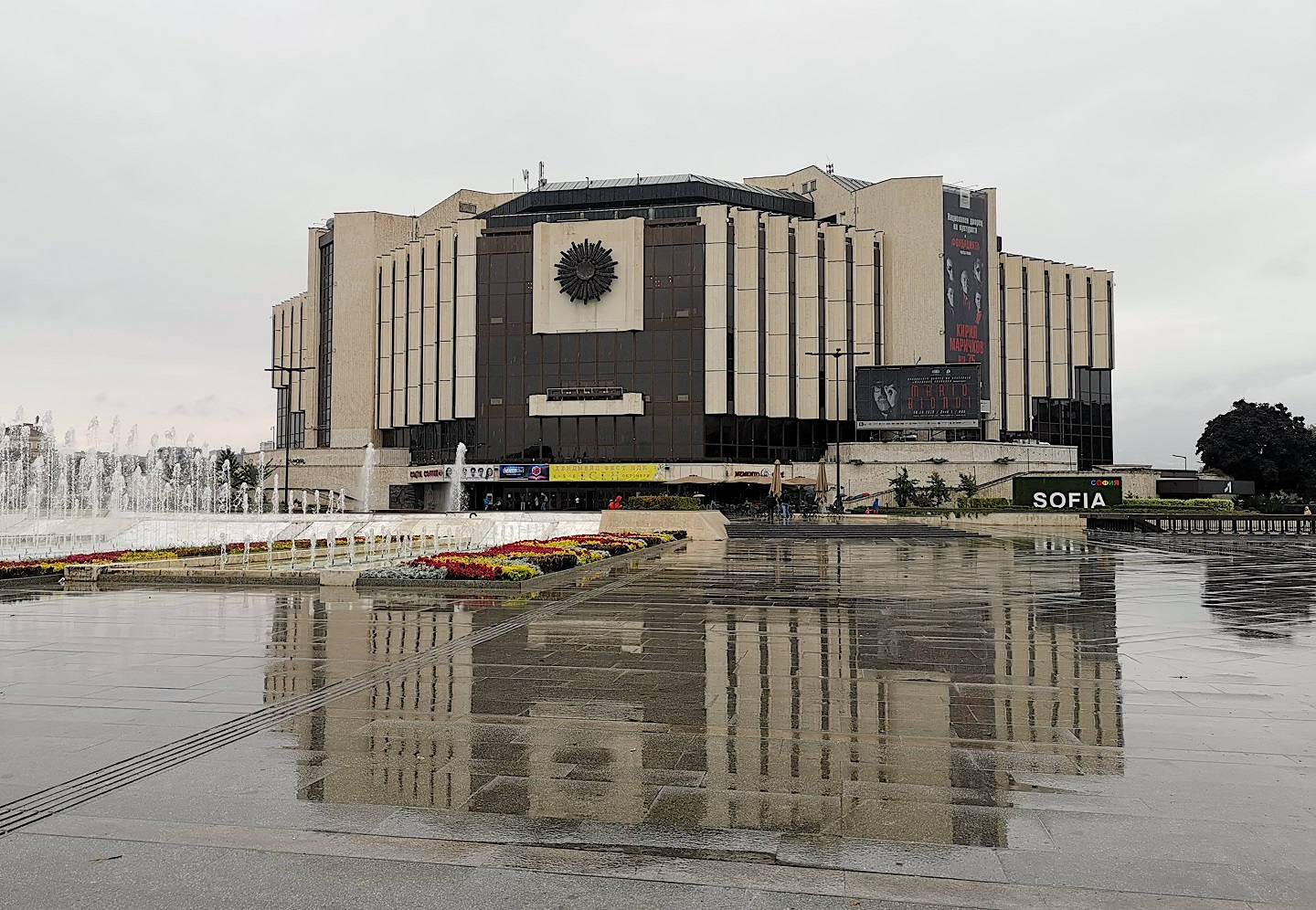
With a total area of 123 000 sq m, the National Palace of Culture (NDK) is the largest conference and exhibition centre on the whole Balkan Peninsula. Built in only four years, the NDK opened its doors in 1981 celebrating the 1300th anniversary of the founding of Bulgaria. The symbol of the palace, facing Bulgaria Square above the main entrance, is a stylized sun with a diameter of 7 metres. It resembles the wooden carvings that can be seen on the ceilings of old Bulgarian houses.
The building has 8 floors and 3 underground levels, divided into 13 halls, 55 conference rooms and 15 000 square meters of exhibition space. The largest hall has over 3300 seats. The National Palace of Culture has been the site of numerous national and international events, concerts and exhibitions for decades. It hosted UNESCO, UN, and NATO conferences as well. In 2005, NDK was awarded the international prize “Best Congress Center in the World” by the International Organization of Congress Centres.
St. Nedelya Church
BG: Света Неделя, 20 Sveta Nedelya Square, GPS: 42.696708, 23.321385
St Nedelya Church is another notable landmark in the very center of Sofia. It was originally a wooden church, built probably in the 10th century. After many reconstructions, the building got its present look in the 1930s. The church is open from 8:00 to 18:00 every day and is free to enter.
Boyana Church
BG: Боянска църква, 3 Boyansko Ezero Street, 1616 Boyana, Sofia, GPS: 42.644655, 23.266225

Boyana Church is a medieval Bulgarian Orthodox church, a UNESCO World Heritage Site since 1979. It is one of the 10 Bulgarian sites on the list and the only one located in Sofia. The church has an extremely high cultural and historical value because of its frescoes painted in the 13th century. The oldest part of the building is the east wing, which was built in the 11th century. Boyana Church is one of the most complete and perfectly preserved remains of Eastern European medieval art. The church can be reached by car or buses 64 and 107. It is open every day between 09:00 and 17:30 (November – March) and from 09:30 to 18:00 (April – October). The ticket price is 10 BGN. Due to high interest and low capacity, it is recommended to book your visit in advance, especially for groups. For more details, visit our page about Boyana Church.
Complex Ancient Serdica
GPS: 42.697860, 23.322469
The ruins of the ancient Roman city Serdica are buried under the city center. The discovered parts are now visible between Serdika metro station and TZUM shopping mall. There is a further, covered area towards the former communist party building with tables of information for visitors. The archeological complex is attached to Sofia’s most important underpass so much that you will certainly find it without searching.
Church of St. Petka
BG: Църква „Света Петка Самарджийска“, GPS: 42.697857, 23.322163
The Church of St Petka is located under ground level in the underpass right next to the remains of ancient Serdica. It’s a medieval Orthodox church built in the 11th century over Roman tombs.
The Church of Saint George / Saint George Rotunda
BG: Ротонда „Свети Георги“, 2 Kniaz Aleksandar Dondukov Boulevard, GPS: 42.696890, 23.322906
St. George Rotunda is the oldest preserved building in Sofia. It’s an early Christian church built by the Romans in the 4th century. The church is situated in an unusual setting in a courtyard between Hotel Balkan and the Presidency. The area has an entrance on both the northern and southern sides. The church is open to visitors from 08:00 to 18:00 every day and is free to enter.
Saint Sofia Church
BG: Света София, 2 Paris Street, GPS: 42.696568, 23.331103
Built during the rule of Byzantine Emperor Justinian I in the 6th century, this is the second oldest church in Sofia after Saint George Rotunda. The city of Sofia was named after the church in the 14th century. On the southern side of this valuable Early Christian construction, you can find the Monument of the Unknown Soldier that honors all Bulgarian soldiers who died defending the country. The monument was inaugurated in 1981, the 1300th anniversary of the establishment of Bulgaria. Saint Sofia Church is just meters away from Alexander Nevsky Cathedral, basically on the other side of the road. The church is open every day between 07:00 and 19:00 (07:00-18:00 from October to March) and is free to enter.
The Largo
BG: Ларго, GPS: 42.697464, 23.324167
The Largo is a group of three Socialist Classicism building blocks around Nezavisimost (Independence) Square in the center of Sofia, built in the 1950s. There are glass floors in the center of the square that display ruins from ancient Serdica. Currently housing the National Assembly of Bulgaria, the tall, central building was once home to the Bulgarian Communist Party. Saint George Rotunda is surrounded by the southern edifice of the Largo which houses the President’s Office, Hotel Balkan, the Ministry of Education and some luxury brand shops. The northern building is occupied by TZUM shopping mall, the Constitutional Court of Bulgaria and the Council of Ministers.
Central Sofia Market Hall
BG: Централни софийски хали, 25 Knyaginya Maria Luiza Boulevard, GPS: 42.699848, 23.322224
Opened in 1911, Central Sofia Market Hall is the first modern, covered market hall in Bulgaria. The Neo-Renaissance style marketplace offered fresh meat, dairy products, fruits, vegetables and many more goods. During its renovation in the 1990s, remains of ancient Serdica were discovered which are currently displayed in the basement of the building. These days the Market Hall is just a regular supermarket though.
Mineral hot springs and the Central Mineral Baths
37 Ekzarh Yosif Street, GPS: 42.699987, 23.324237
Mineral springs played a vital role in populating the Sofia area thousands of years ago, and even now, they’re represented in Sofia’s coat of arms. Thracian tribes settled here because of them, then Romans and Turks built several baths around the square now called Park “Tsentralna banya” (Central Bath). The building with a fountain in front used to be the city’s public baths until 1986. Now it accommodates the Regional Historical Museum. Next to the park, on the other side of Iskar street, you can find the actual springs which are still very popular among locals. The naturally hot water comes from a fissure system that lies at a depth of more than 750 m, the concrete well built in 1955 is 28 m deep. It has healing and preventive features thanks to its low-mineralization and the presence of carbonate, sulphate and sodium ions. The temperature at the source is 46 °C. The water has a pH of 9.48. It is clean and drinkable but be aware that it might cause you diarrhea due to the ingredients.
St Sofia Monument
GPS: 42.697962, 23.321410
The 26 m monument was erected in 2000 and it quickly became one of Sofia’s symbols. The partially gold-plated statue is located where the main western gate of the ancient city used to be.
Ladies’ market
BG: Женски пазар, 32 Stefan Stambolov Boulevard, GPS: 42.700953, 23.318539
The largest open-air market in Sofia is said to be more than 140 years old. Besides offering fruit, vegetables, meat and bakery products, it is probably the best choice for buying souvenirs as well.
Dragalevtsi (or Dragalevski) Monastery
BG: Драгалевски манастир, GPS: 42.619396, 23.298985
Dragalevtsi Monastery is a Bulgarian Orthodox monastery founded in the 14th century. It is located on the outskirts of Sofia in a beautiful setting. At an altitude of 1030 m on the slopes of Vitosha, the monastery is surrounded by quiet forests. It has no specified address but can be found by the road that leads to Aleko hut. There is free parking available. The monastery is also accessible by buses 66 and 93.
Parks
Sofia is full of green areas and parks that have an important role in the everyday life of the locals. The City Garden (hosting the beautiful Ivan Vazov National Theater), Doctor’s Garden, or Knyazheska Garden are all ideal places for a relaxing walk.
Vitosha
The Sofia experience cannot be complete without going up to the Vitosha mountain, which has numerous hiking routes and famous spots. The highest peak, called Cherni Vrah (meaning ’Black Peak’, altitude: 2290 m) is a popular hike among locals too. It starts from Aleko hut (marked on the map below), situated 1840 meters above sea level. There are three easy ways to get there. You can drive up and park your car there, take bus 66 (departs from Sofia Zoo), or go up by the Simeonovo cabin lift. Please note that the lift operates only on weekends in the summer (and every day during ski season).
Even if you don’t want to do the 2-hour hike to the peak, it is worth going up there for the view, to walk around a bit and feel the atmosphere. There are several places to eat and drink as well. From the peak you can enjoy the view of Rila, the highest mountain range of the Balkan Peninsula.
Boyana waterfall is also among Vitosha’s top attractions. It is the highest waterfall in the mountain range reaching up to 25 meters. It can be visited by taking the trail starting near Boyana Church. There are two options for the hike that has an elevation gain of 460 m. It is advised to choose the longer one that goes along Boyana Lake as it is not as steep as the direct route. The waterfall often freezes in the winter due to its location in a deep valley, making it a favored ice climbing spot. The cascade can dry up entirely during summer. The path then leads further up to another popular sight, the rock formation called Golden Bridges.

